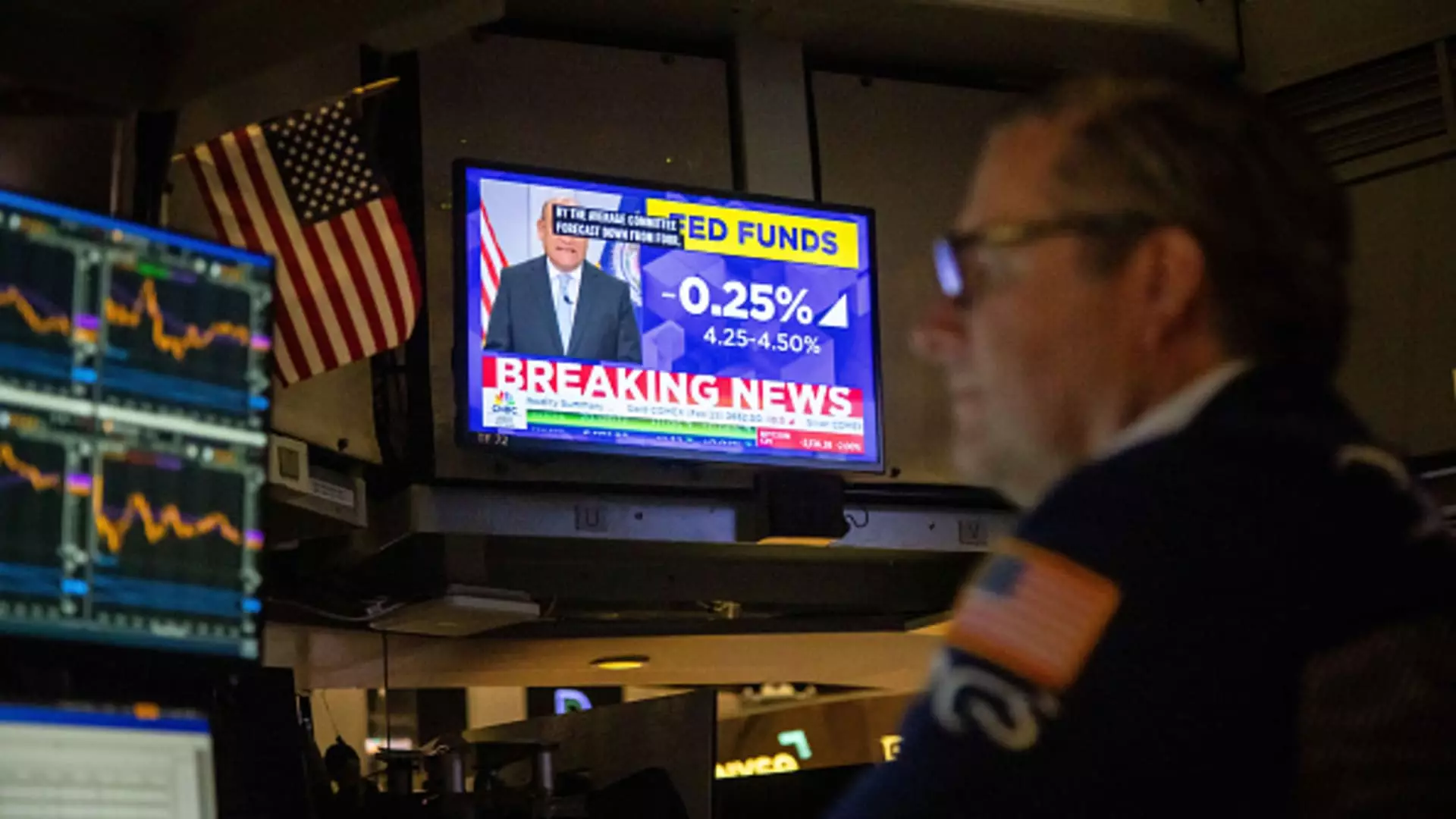The CBOE Volatility Index, commonly known as the VIX, serves as a crucial indicator of market sentiment, reflecting investor expectations of future volatility in the S&P 500 index. It operates as a fear gauge; an increasing VIX signals rising anxiety among investors, while a declining VIX often indicates complacency. The dramatic fluctuations in the VIX can be attributed to various macroeconomic factors, particularly decisions made by central banks.
The Recent Surge: A Wake-Up Call for Investors
On a stark Wednesday, the VIX experienced one of its most significant jumps in history, soaring by an astounding 74%, reaching a closing value of 27.62. This spike was triggered by the Federal Reserve’s announcement indicating that it would reduce the pace of rate cuts anticipated in the coming year. Investors were expecting a more aggressive easing strategy amidst ongoing economic uncertainties, but the Fed pulled back, prompting alarm bells to ring throughout the trading community.
When the VIX spikes, as it did on that Wednesday, it reflects a sudden rush among investors to hedge their positions through put options, which aim to mitigate potential losses in declining markets. The close on the day of the VIX surge marked not only an alarming turn in investor sentiment but also underscored a dramatic shift from the previous months, where the index had remained subdued below the significant threshold of 20.
The aftermath of the VIX’s surge was immediate and severe, with the Dow Jones Industrial Average plummeting by 1,100 points—signifying the steepest consecutive loss it had experienced in recent times. Investors had clung to the expectation of several rate cuts, which they believed would sustain the ongoing bull market. The Fed’s revised projection of just two cuts in the following year sent shockwaves through the market and brought forth concerns about the longevity of the bullish trend.
Typically, when the VIX surpasses 20, it indicates elevated fear and uncertainty, stirring a cautious approach among market participants. While the previously low readings of the VIX up to this point had suggested contentment among traders, many were worried that such calmness was a precursor to greater volatility ahead.
Comparatively, this recent upheaval in the VIX brings to mind previous significant spikes in volatility, with the February 2018 spike serving as a critical reference point when the index catapulted by 115%. Past occurrences reveal the inherent unpredictability of the markets, especially following pivotal announcements by the Federal Reserve. The financial landscape is further complicated when considering external factors, such as recession fears and geopolitical tensions, which can lead to abrupt shifts in investor confidence.
As we move forward, the implications of the Fed’s decisions and the subsequent market reactions underscore the importance of vigilant monitoring of volatility indicators like the VIX. Investors must remain agile and informed as policy adjustments can dramatically reshape market dynamics. They are reminded that while the pursuit of bullish positions may be enticing, understanding underlying market signals and preparing for potential downturns is equally crucial in sustaining long-term investment success.

